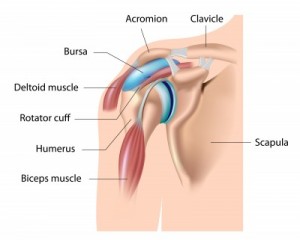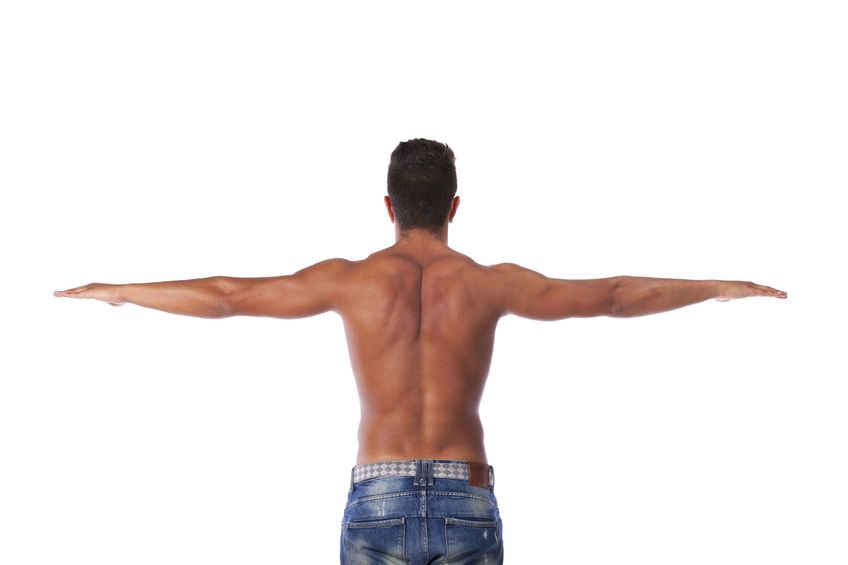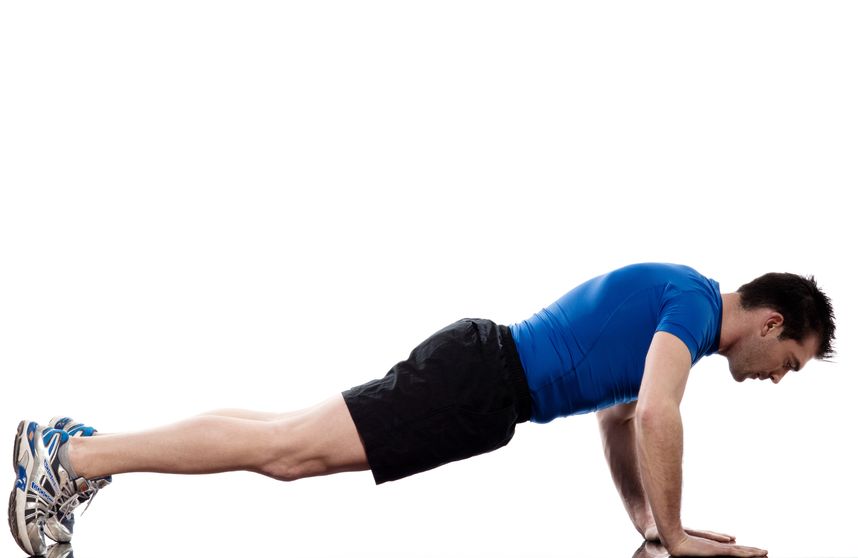Essential Shoulder Exercises
by ACE Physical Therapy and Sports Medicine Institute
This post is part of our Exercise Essentials Series introducing specific exercises that can be and should be performed by everyone to help maintain the proper flexibility, strength and muscular endurance of a particular body part. A habit of regular training can help reduce injuries and improve overall conditioning.
Tips for Shoulder Exercises.
- Perform these exercises daily for the first month.
- Contact your Physical Therapist to learn how to “live” with proper posture.
- Poor shoulder posture can lead to neck pain.
- Stretching should be performed throughout the day.
- If your shoulder hurts, seek help from your Physical Therapist.
Why Shoulder Exercises Are Essential
Consistent shoulder exercises play a vital role in helping us to feel well and participate in all our activities. A healthy human shoulder has an amazing capacity to move in almost any direction. As our most mobile joint, the shoulder allows us to have a wide range of functions, and we rely on the shoulder continuously throughout the day for almost every activity we do. When it is injured, it can impact all our actions.
The wide-ranging mobility of the shoulder joint compromises its stability, causing it to rely heavily on the dynamic stabilizing structures or muscles. In order for the musculature of the shoulder to function properly, the scapulae must be in proper position. When the shoulder joint is in the proper postural position, it receives the stabilizing support of the musculature and can perform most functional activities without difficulty
A Closer Look at the Shoulder Joint
 Three bones intersect to form the shoulder joint: the scapulae (shoulder blade), the humerus (upper arm), and the clavicle (collarbone). The Rotator Cuff (RTC) includes four muscles and tendons that connect the humerus to the scapulae. More specifically, the RTC muscles are responsible for keeping the humeral head on the glenoid fossa of the scapulae. The movement of the shoulder joint is dependent upon the humeral head’s articulation on this surface. Proper postural position of the shoulder during all daily activities will enable the shoulder to move without placing abnormal stresses and strains on the joint structures. The proper posture of the shoulder places the lateral; superior edge of the scapulae (acromion) is placed in alignment with the ear. Proper posture places the muscle in the ideal position to be able to generate the force that provides the stability and movement of the shoulder. The shoulder blade is held in this position by other muscles that attach to the spine, ribs, pelvis and scapulae borders.
Three bones intersect to form the shoulder joint: the scapulae (shoulder blade), the humerus (upper arm), and the clavicle (collarbone). The Rotator Cuff (RTC) includes four muscles and tendons that connect the humerus to the scapulae. More specifically, the RTC muscles are responsible for keeping the humeral head on the glenoid fossa of the scapulae. The movement of the shoulder joint is dependent upon the humeral head’s articulation on this surface. Proper postural position of the shoulder during all daily activities will enable the shoulder to move without placing abnormal stresses and strains on the joint structures. The proper posture of the shoulder places the lateral; superior edge of the scapulae (acromion) is placed in alignment with the ear. Proper posture places the muscle in the ideal position to be able to generate the force that provides the stability and movement of the shoulder. The shoulder blade is held in this position by other muscles that attach to the spine, ribs, pelvis and scapulae borders.
Shoulder Exercises For Maintaining Health
The following shoulder exercises will enhance the strength and flexibility of the shoulder complex. These muscles will help to maintain proper posture and enable the shoulder to function correctly. There are numerous exercises to maintain the health of our body and some require the use of weights, machines, resistance tubing, medicine balls, theraballs and many other ways to add resistance to the exercise. Flexibility is needed in all soft tissues to guarantee proper motion of the joints. Without proper motion, there can be excess stress and strain applied to an area and cause an injury or pain.
STRENGTHENING / ENDURANCE
These exercises should be performed in sets of 5-7 repetitions and 5-10 sets per day. These muscles and all muscles should never be “strength” trained on two consecutive days. Endurance training is very similar to strength training in that the exact same exercises are used for both, but the former is performed in a way that requires a high number of repetitions. These exercises are performed in sets of 12-20 repetitions. 3-5 sets are usually sufficient to get the desired result in the muscle.
SHRUGS: Stand facing a mirror to assess your posture and be able to watch your shoulders move symmetrically. Hold weight in your hands and keep your arms at your side. Your elbows remain straight throughout the lifting motion. Start by moving your shoulders upwards towards your ears. At the top of the motion pause, and then move your shoulders backwards. This is the most important aspect of this exercise. As your shoulders move backwards you should think that you are trying to put your shoulder blades (scapulae) together. The muscles that “pull” the shoulder blades together are essential in maintaining proper posture of the shoulders and cervical spine. When the shoulders have traversed the entire way backwards, pause and squeeze the shoulder blades together and then lower your shoulders to the starting position.
PULL APARTS: Stand and hold a piece of Theratubing (Rubber tubing can be purchased at most sporting goods stores or ask your Physical Therapist for a piece) of appropriate tensile strength in your hands. Your arms should be at or near shoulder level and your elbows should be fully extended (straight). Your palms should be facing each other so that your thumbs are pointed towards the ceiling. Slowly move your arms apart and stretch (“pull apart”) the Theraband. Your goal is to get your hands spread apart with your elbows straight and in line with your shoulders. Your arms should remain parallel to the floor at all times. The final phase of this exercise is to take your shoulder blades and squeeze them together. As the Theraband “recoils” your arms should move slowly back to the starting position.
PUSH UPS (STANDARD): The Push Up position can be modified so everyone can perform this exercise. It is great to use to build strength in the chest and arms. The “proper” position is to be prone (face down) on the floor and rise up onto your hands and toes. Nothing else should be touching the floor. Your elbows and knees are straight, your arms are shoulder width apart and your feet are together; and your back should be straight. The push up exercise begins by bending your elbows as you slowly lower your torso to the floor (don’t touch the floor) and then “push” yourself back up to the starting position by extending your elbows. You can make the exercise easier by placing your knees on the floor throughout the routine.
FLEXION: Standing (preferably facing a mirror to watch for symmetrical shoulder motion) begin with both arms at your side. The elbow remains extended (straight) throughout the entire exercise. Raise your arms to shoulder level. The thumbs should be pointing towards the ceiling. Pause at the top and then return to the starting position slowly and under control.
LATERAL RAISE: This exercise begins similarly to the previous Flexion exercise. Standing and facing a mirror, your arms are at your side. Begin to raise your arms out to the side and keep the elbows straight throughout the entire exercise. Raise your arms and keep the palms of your hands parallel (facing) the floor. Pause at shoulder level and return to the starting position slowly and under control.
SUPERMAN (T’s, Y’s, I’s): This routine consist of three different exercises performed in the prone (face down) position. Lie on something flat and rest your forehead on a towel or small pillow. Keep your arms straight throughout the entire exercise routine for all three exercise positions. The palms of your hands should remain facing the floor at all times.
“Y’s”: Lie with your arms in front of you, elbows straight. Your arms should be as close to your ears as possible, but it is fine if they are slightly separated away from the ears. Together, raise both your arms as high as possible. Most people can only raise them a few inches. The palms of the hands should remain facing the floor at all times. Pause and then lower them slowly to the starting position.
“T’s”: Lie in the same position as the previous exercise, but put your arms directly out to the side and keep them at shoulder level. Raise your arms together and attempt to squeeze your shoulder blades together at the same time. The palms of the hands should remain facing the floor at all times. Pause at the top and then return slowly to the starting position.
“I’s”: Lie in the same position and place your arms down at your sides. Your palms are facing the ceiling. Begin by retracting (squeezing) your shoulder blades together. When the shoulder blades are squeezed as firmly together as possible, raise the arms as high as possible. Pause and return slowly to the starting position.
STRETCHES
When trying to achieve the goal of increasing the flexibility of a joint one must be able to “stretch” the elastic and non-elastic materials that hold the joint together. The elastic materials are primarily the muscle tissue. Similar to a rubber band the muscle can be stretched and it will “snap” back and return to the original length. Slight increases in this length can be achieved if prolonged, frequent stretching is performed. The best way to “gain” flexibility is to be able to elongate the non-elastic materials. These structures are designed to provide intrinsic stability to the joint and react similarly to leather. Prolonged, frequent stretching can increase the pliability and length of these structures. “True” increases in flexibility require these structures to elongate. These exercises should be performed daily and several times per day. The stretch should be slow, methodical and held at a place in the motion when the structures that are stretched produce a slight amount of discomfort and pain.
DOORWAY STRETCH (Corner stretch): Stand in the opening of the doorway. Place both arms on the doorway frame with the palms flat against the frame. Your arms should be above shoulder level and near each corner of the frame. Slowly move forward until you feel a stretching sensation in the front of your shoulders and chest area. Stop and hold that “stretch” for a prolonged period (30+ seconds would be good). This stretch can be repeated with the arms placed at varying positions on the framework to achieve a slightly different stretching sensation in the chest and arms. This stretch can be in the “corner” of a room if a doorway is not available.
BOLSTER/ TOWEL ROLL STRETCH: A foam roller (bolster) or a towel can be rolled up to a length of approximately 8 -12 inches. The person places the rolled object between their shoulder blades as they lie on top of it. The stretch occurs when the arms are moved out to the side with the palms facing upward. The stretch should be felt in the chest and front of the shoulders.
The shoulder joint is designed to allow a great deal of motion, which makes our daily activities much easier to perform. The inability to stabilize the joint can result secondary to weak or tight muscles. If the joint is placed in the proper postural position, the supporting muscles achieve the dynamic stability more easily. The above exercises are capable of strengthening and stretching these muscles, which will help to keep your shoulder healthy.
Read more articles on our main website blog at: ACE-pt.org/blog
Vist our main website at: www.ACE-pt.org


